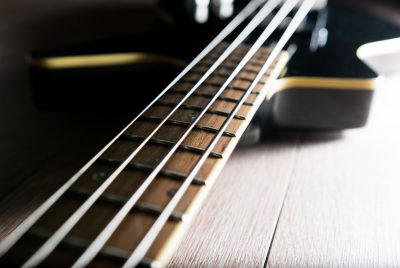How to Play Bass Guitar
Introduction
Have you ever felt the deep, resonating thrum of the bass guitar and thought, “I want to do that!”? You’re in the right place. This guide will walk you through the basics of how to play the bass guitar and provide a platform from which you can explore your musical potential. Please checkout our other articles for a broad topic selection for all things Bass Guitar.
Why Play Bass Guitar?
The bass guitar is the unsung hero of many bands. It may not always take the spotlight, but it is the musical glue that holds everything together. It supports the melody, defines the chord structure, and gives songs that rhythm we can’t help but tap our feet to.
Understanding the Bass Guitar
Anatomy of the Bass Guitar
Understanding your instrument is crucial. A standard bass has four strings tuned EADG, though five and six-string versions exist for broader tonal ranges. Key components include the body, neck, fretboard, strings, pickups (which convert string vibrations into electrical signals), and the tuning pegs.
Types of Bass Guitars
Basses come in two main flavors: electric and acoustic. Electric basses, which are the most common, require an amplifier to produce sound, whereas acoustic basses have a hollow body that amplifies the sound acoustically. There are also fretless basses, offering a smoother, gliding sound, akin to an upright bass.
Getting Started
Choosing Your First Bass Guitar
Picking your first bass can be daunting. Look for something comfortable, within your budget, and suits your aesthetic tastes. Don’t shy away from second-hand instruments; they can offer excellent value.
Essential Accessories
To get started, you’ll need a few essentials: an amplifier (for electric basses), a sturdy strap, a tuner, and some picks, even if you plan to play with your fingers. It’s all about exploring what works for you.
Fundamentals of Playing Bass
Holding Your Bass Correctly
Good posture and holding your bass correctly can save you a lot of discomfort down the line. Ensure the bass is balanced, and your back is straight, whether sitting or standing.
Four Strings and Their Tuning
The bass guitar typically has four strings, each corresponding to a specific note: E, A, D, and G. These are the base notes upon which you will create your musical masterpieces.
The Fretboard
The fretboard is like your canvas; it’s where the magic happens. Each fret represents a musical note. By pressing the strings onto different frets, you produce different sounds.

Basic Techniques for Playing Bass Guitar
Plucking Techniques
Fingerstyle
The fingerstyle technique is one of the most common ways to play the bass. You’ll use your index and middle fingers to pluck the strings, alternating between them.
Slapping
Slapping is a bit more advanced, but it’s a great way to add some funkiness to your basslines. It involves bouncing your thumb off the string to create a distinctive “slap” sound.
Understanding Rhythm and Groove
Importance of Timing
The bass guitar is the heartbeat of the band. As such, understanding and maintaining a steady rhythm is crucial. It’s what gives the music consistency and drive.
Playing with a Metronome
Using a metronome can really help to develop your sense of timing. Start slow, and gradually increase the tempo as you become more comfortable.

Learning Bass Guitar Chords
Simple Chord Progressions
Playing chords on a bass can be somewhat different from other guitars. Because of the bass’s role in the band, bassists often play single notes that belong to the chord, instead of strumming the entire chord. However, understanding chord progressions is vital as it helps you build and follow the backbone of the song.
In the bass world, power chords come down to playing the root note and its fifth, which creates a powerful, driving sound. They’re perfect for rock, punk, and many other genres.
Practice Tips
Regular Practice
Here’s the not-so-secret secret: there’s no substitute for practice. Regular, focused practice sessions are the key to mastering your bass guitar. Consistency is your friend here.
Learning from Others
Don’t underestimate the power of learning from other musicians. Join a local group, follow online tutorials, or even get a tutor. There’s so much to gain from the experience and knowledge of others.
Conclusion
Embarking on your journey to become a bass guitarist is an exciting adventure. It might seem daunting at first, but remember, every professional bassist started where you are right now. With patience, persistence, and passion, you’ll find yourself grooving and jamming in no time.
FAQs
1. Can I start learning bass guitar without any prior musical knowledge?
Absolutely! While having some background in music theory can be beneficial, it’s not a prerequisite. You can start learning bass guitar from scratch.
2. How long does it take to learn to play bass guitar?
The timeline can vary greatly depending on how often you practice, your learning method, and your musical background. However, with regular practice, you can expect to play simple songs within a few months.
3. Do I need to know how to play the guitar before learning bass?
No, you do not. While they share some similarities, the bass guitar is a unique instrument with its own techniques.
4. What type of bass guitar should a beginner use?
A four-string bass guitar is typically recommended for beginners. They’re easier to navigate, and most music pieces can be played on them.
5. How often should I practice?
Ideally, you should aim for at least 15-30 minutes of focused practice every day. Regularity is more important than duration; it’s better to practice a little each day than for hours at a time only once a week.




